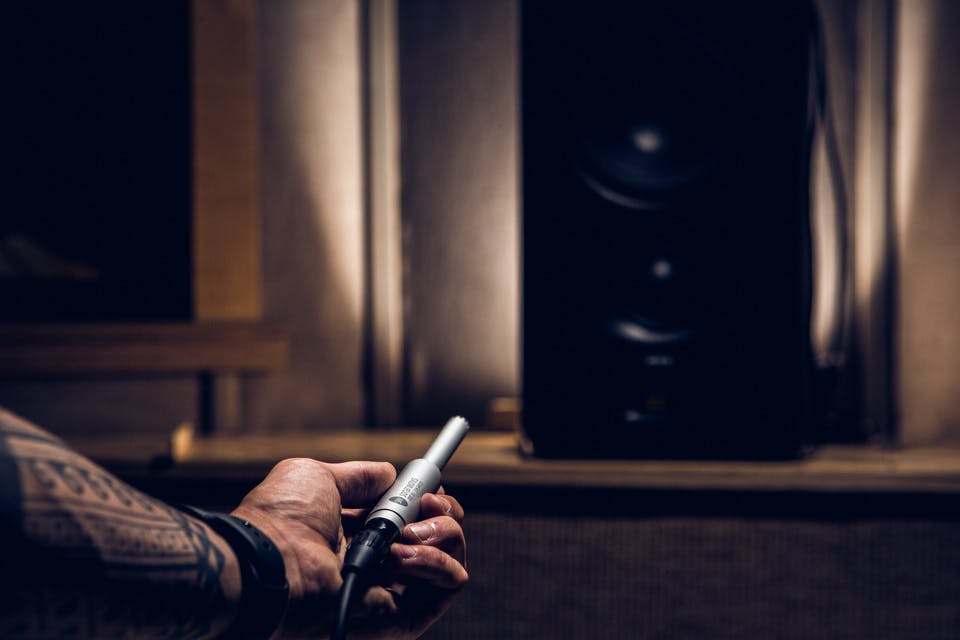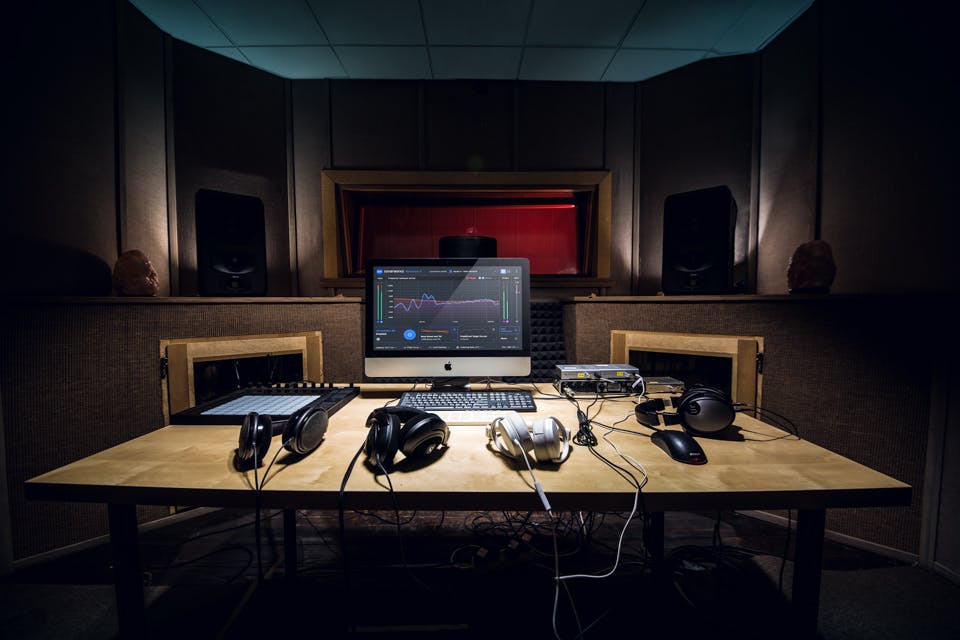The subject of how best to spend your money to improve your productions will be different for everyone. Maybe you are a weekend warrior who wants to jam with friends every Friday night, or perhaps you are running a post-production business with clients coming by regularly. Maybe you are recording bands in a large space or beat making in your bedroom. Do you see what I am getting at? Everyone has unique needs. Sure, we all want better monitors, microphones, preamps, interfaces, computers, plug-ins, et cetera. In this blog, I’ll focus on a handful of aspects of enhancing your production workflow that will benefit anyone and everyone. Things that will make us more creative, productive and richer, regardless of end-game business goals or the gear we may or may not already have or that we lust after.
I. Reflections Aren’t Just In Mirrors
The biggest mistake we make when setting up new studios is underestimating the importance of room acoustics. Acoustics affect the quality of what we hear more than our particular choice of monitors, microphones, preamps, or converters. Fortunately, this problem need not be an expensive one to solve.
One of the most noticeable problems in small room acoustics tends to be in the bass response. Commercial bass traps are readily available from companies like Auralex and GIK. Bass traps are often placed in corners, so they remain out of your way, and they smooth out the lumpy low end problems that lead to poor translation and muddy or lean low frequencies in your mixes.
Whenever sound is generated in a room, part of the sound travels directly to your ears (or microphone) and part of the sound bounces off the surfaces of the room and then reaches your ears (or microphone). These reflections, which follow the direct signal by only a few milliseconds, are called first reflections and these reflections combine with the direct sound and affect the overall frequency balance and clarity of the sound. Variables like the size and shape of the room and the nature of the reflective surfaces determine how the reflected sound will interact with the direct sound.
Auralex, among many other companies, sells a wide range of absorption panels for this purpose. Don’t overdo it, though, as too much absorption can make a room sound “dead.” A certain amount of reflections are necessary to keep things sounding natural and open, but some rooms can be more dead than others. Small vocal booths, for instance, can be made much more dead (less reflective) than larger performance areas for recording acoustic instruments. Control rooms should be a mixture of reflective areas and dead areas, following the live-end-dead-end principles. Be sure to review our article on killing those first reflections in your control room!
Acoustic diffusers work in conjunction with absorption panels by scattering reflections, so sound doesn’t get focused directly back to any specific area. Diffusion helps retain a natural sense of space and a smooth frequency response. Strategically placed bookshelves, for instance, can act as low-cost natural diffusers. The uneven nature of the surfaces forces a random sort of dispersion of acoustic reflections. Companies like GIK Acoustics, among others, manufacture decorative acoustic diffuser panels based on established acoustic theory.
Ceiling clouds help reduce unwanted reflections from the ceiling. A modest amount of money spent on a combination of absorber panels, diffusers, and ceiling clouds goes a long way to tracking and monitoring in more neutral environments. Online acoustic planning and analysis programs are available from many acoustic companies, like this one from GIK or this one from Auralex.
II. Make Good Monitors Sound Great

Now that your room is acoustically treated, it’s essential to calibrate your monitors so they work optimally with the unique frequency response curve of your studio space. Most modern speakers include some onboard DSP to compensate for things like reflections due to walls or corners behind or close to the speakers. These simple EQs are often just coarse two- or three-position dipswitch adjustments. While useful, these EQ controls don’t compare with accurately calibrating your monitors using software-based analysis and correction like that in Sonarworks Reference.
Reference 4 from Sonarworks calibrates, or “tunes” your monitors to your room. It does this by taking a series of acoustic measurements around the listening area and calculating a correction curve so that you can mix on your monitors with confidence. Your monitors are, in effect, unaffected by the frequency dips and boosts that are inherent and unique to your studio.
Besides frequency issues, many studios have simple-to-fix problems like unbalanced volume between left and right speakers. Be sure not to just set the dial to what looks like the same setting on your monitors, but also measure the volume using an SPL meter or room correction software to make sure your levels are perfectly matched. A much more subtle problem occurs when the left and right speakers have slight timing differences and the sound that reaches your ears is not perfectly in phase between the left and right channels. Reference 4 software corrects this problem, as well as channel volume matching and overall frequency response.
Utilizing room correction software like Reference 4 ensures that your mixes will translate consistently when played back in other environments and listening conditions. We may not be able to control the listening conditions that our mixes are played back in, but Reference 4 allows us to trust the environment where we produce and mix our music.
III. Ergonomics
We spend a lot of time in our studios—most of it seated in front of our screens and monitors. The chair we sit in is undoubtedly THE most used piece of gear in our studios. In addition to creating in it, we also often eat and even fall asleep in it. A good chair is crucial not only to our comfort but our health as well.
Those of us over forty will surely know what I am talking about. For those younger producers, enjoy your healthy backs and arms while you still can. Buy yourself a good; make that a GREAT chair. In 20 years you will look at that chair as the best purchase you’ve ever made.
A good studio chair needs to be comfortable, adjustable, and mobile, since we need to move around while we are working to reach patch bays, outboard gear, etc. Most importantly, we need a chair to support our backs and arms. Good posture is critical to preventing back injuries, as well as carpal tunnel and tendonitis-related problems. An adjustable armrest is vital to ensure your arms are at a 90% angle with your keyboard. Excellent support for your back goes a long way not only in keeping you comfortable during long editing or mixing sessions but also in keeping you pain-free twenty years from now. You can find a list of recommended studio chairs in this article from Music Industry How To.
IV. Upgrade Your Skills
Your room is sounding great, your speakers are calibrated, and you are comfortably set up to create music. Now what? Education would be a wise place to invest in for yourself. The value of expanding your knowledge applies not only to our creative lives but to life in general. Never before in history have we had such good tools for creating music, as readily available, and as affordable than now. But we have to learn how to use these tools in order to get the best out of them and out of ourselves.
The Internet is full of information about using your favorite music-making hardware and software. Some of it is good and some of it is not so good. Some of it is just plain wrong. Do yourself a favor and invest in professionally authored and curated training materials from one of many respected online resources like Groove3. These days, videos are ubiquitous. YouTube can be hit-and-miss not only in terms of quality but also in continuity. You may pick up some useful tips, but you may miss out on some important fundamentals.
Services like Goove3.com and Puremix.com host industry professionals and skilled educators who share their techniques and knowledge in structured, organized and complete courses that cover all the bases. Whether you want to learn the basics of using your DAW, how to get the most from the latest plug-ins, how to track instruments, how to tap into your creativity or advanced mixing strategies, it’s all there. For those who prefer reading, Groove3 also provides access to Hal Leonard’s curated production library in easy-to-use digital ebook form.
Online education centers are not particularly expensive in the grand scheme of things and will help you bring your skills up to a professional level much more quickly than endlessly trolling through YouTube. Many services provide subscription plans or à la carte viewing options.
V. Listen, Listen, Listen
So, you’ve got your room and monitors optimized, you’re comfortably set up and you’re up to speed with all your hardware and software. What’s next?

Being creatives, we all need to derive inspiration from somewhere. Artists look at paintings. Authors read books. Musicians listen to music. Spend some money on a good streaming subscription and access the best music in the world. Given that we all strive to create high-quality material, it’s worth paying a few extra dollars for a premium service like Tidal or Qobuz, where you can stream music at high resolution.
Most importantly, make sure to set aside time for listening. Given that streaming services make content easily downloadable to your mobile devices, it’s easy to listen away from the studio. I enjoy listening when going on long walks. I get back to the studio with my creative juices flowing, full of ideas to try out.
Listening to music stimulates not just musical ideas, but production ideas, too. Old music, new music, it doesn’t matter – they all have production aesthetics unique to their era and provide jumping-off points to inspire you to navigate specific roadblocks or bottlenecks in your creativity.
The tools to create great music and great productions have never been so abundant to so many. These investment suggestions will help you get the most out of whatever means you have to work with. Whether it is a beat-up old guitar and an SM57 or a fully decked out Pro Tools HDX rig with the best vintage gear available, we all have the tools to create memorable music. Get comfortable, get inspired and get productive!



